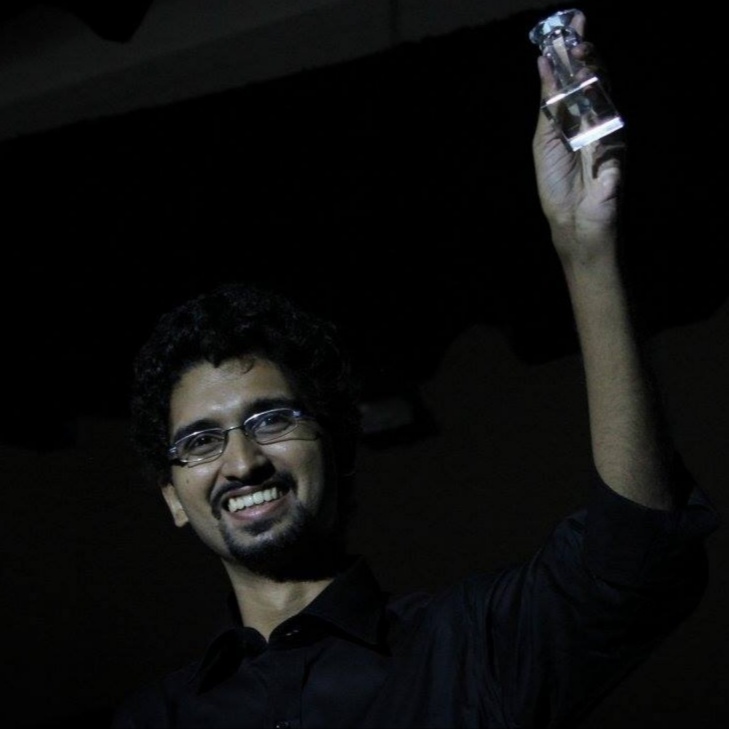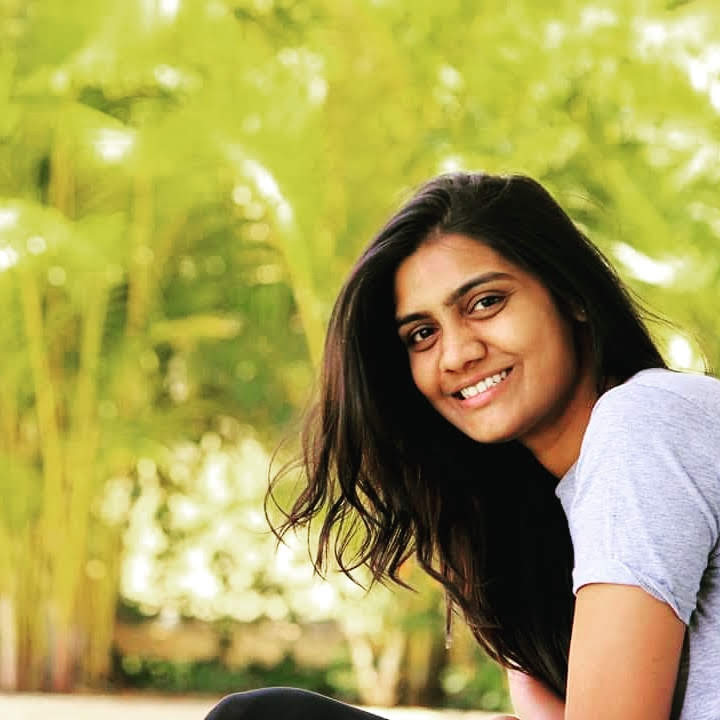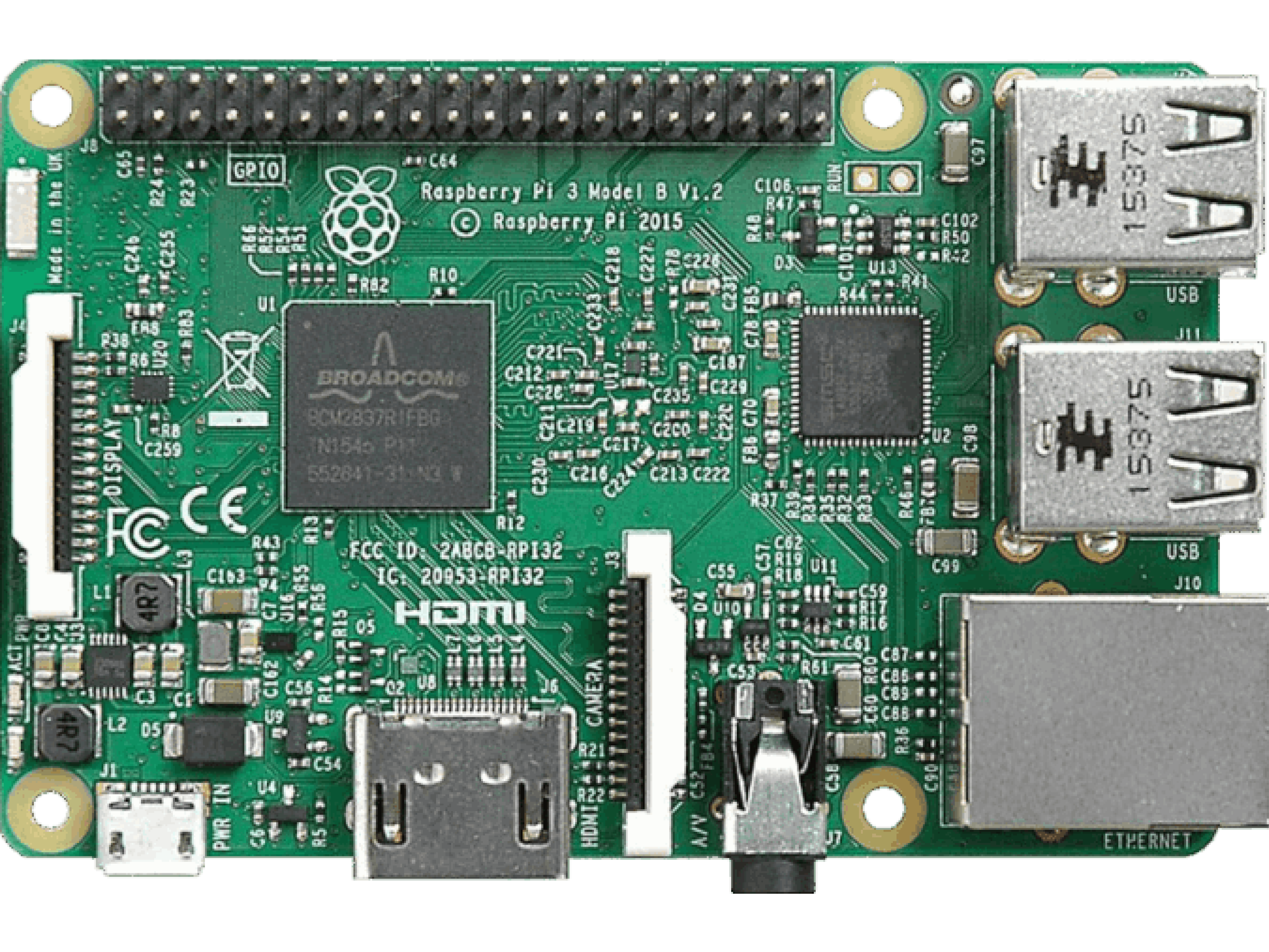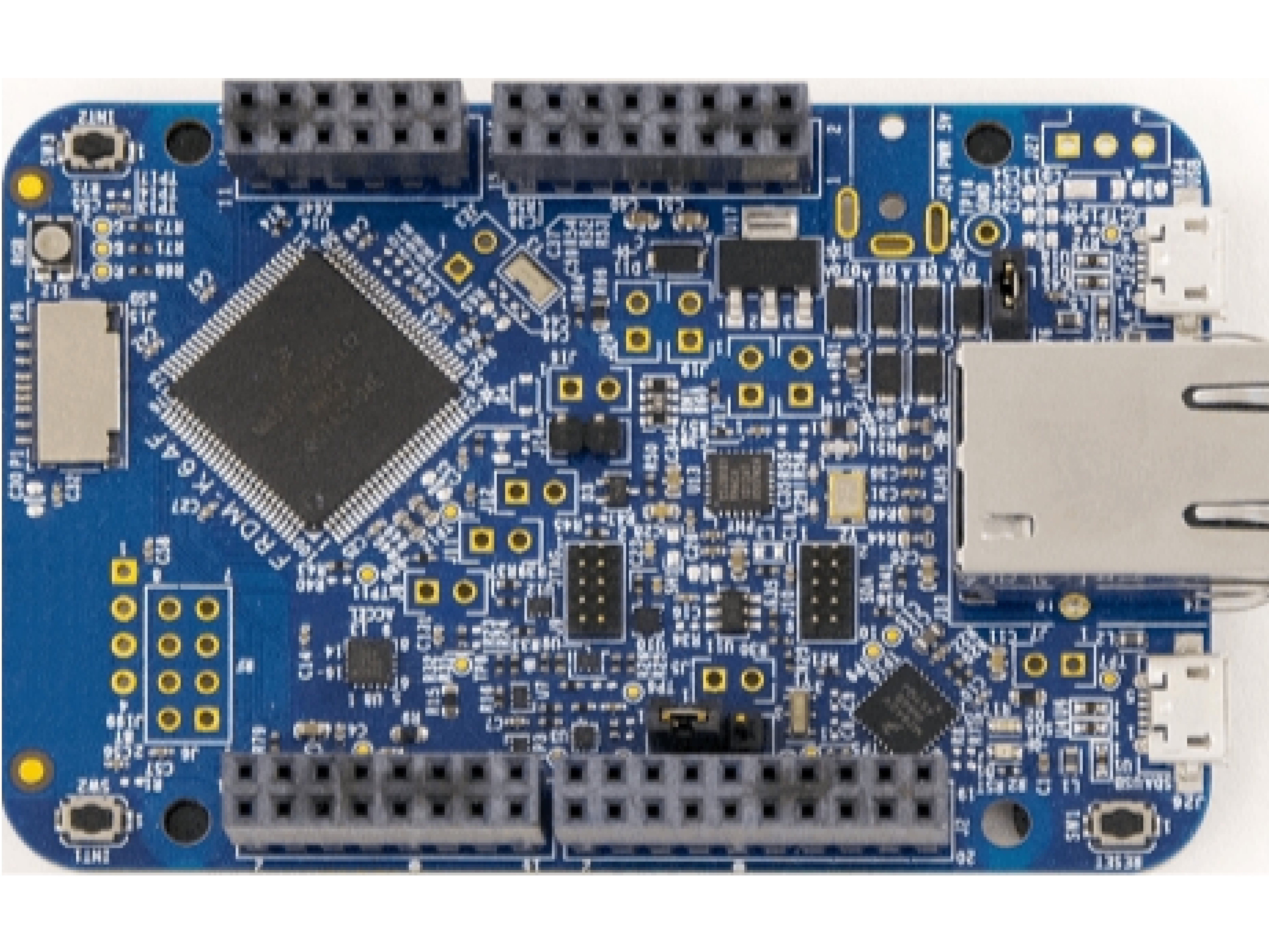Paper Name: Reconfigurable FPGA based Multifunction Image
Processor
Conference Name: International Conference on Communication
Technology ICCT 2015
Authors: Shivank Dhote(Vidyalankar Institute of Technology),
Zalak Dave (Eduvance), Pranav Charjan (Vidyalankar Institute of
Technology), Dr. Jonathan Joshi (Eduvance) and Ganesh Gore
(Eduvance)
Abstract: Image processing (I.P.) systems, involving multiple
processing functionalities, use standard software tools to
manipulate pixel values. The load on the system is high when these
software tools are used for real time I.P. applications as the
system they are running on are systems that are not specific to a
particular application. This would require either high end
hardware systems or an application specific hardware. Field
Programmable Gate Arrays (FPGA) provide a cost effective
customizable solution. The Command Controlled Image Processor
proposed in this paper provides a specific hardware based solution
which is designed only for certain specific image processing
tasks. This paper deals with the design and implementation of a
multifunction processor with different modules using a FPGA. The
design has been prototyped on a Xilinx Spartan 3E FPGA. The
expected and achieved outputs have been given with comparison to
standard MATLAB outputs. The hardware occupancies and delays have
also been reported for different FPGA devices.
Paper Name: Optimizing power consumption in Iot based wireless
sensor network using Bluetooth Low Energy
Conference Name: ICGCIOT, International conference on Green
computing and Internet of Things
Authors: Karan Nair (Eduvance), Janhavi Kulkarni (Eduvance),
Mansi Warde (Eduvance), Zalak Dave (Eduvance), Vedashree
Rawalgaonkar (Eduvance), Ganesh Gore (Eduvance) and Dr. Jonathan
Joshi (Eduvance)
Abstract: The use of chaos for image encryption over traditional
text based encryption methods has gained momentum due to its
superior performance. In this paper, a fast encryption method is
presented which utilizes a substitution-permutation network using
two chaotic maps. Logistic maps are used to create substitution
box while key dependent rectangular chaotic maps is used for
permutation of pixels. The algorithm is applicable to images of
any dimension. It shows improved performance and a good level of
security.
Paper Name: A Low Cost Power Oscilloscope for Educational
Platform using PSoC.
Conference Name: International Conference on Advances in
Communication and Computing Technologies 2014
Authors: Ameya Wagh (Fr Conceicao Rodrigues Institute of
Technology), Zalak Dave (Eduvance), Gaurav Singh (Padmabhushan
Vasantdada Patil Pratishthan's College of Engineering), Varun
Dange (Padmabhushan Vasantdada Patil Pratishthan's College of
Engineering), Abhay Tambe (Reanu Microelectronics Private
Limited) and Sachin Gengaje (Walchand Institute of Technology).
Abstract: This paper discusses the design and implementation of a
portable oscilloscope using a programmable system on chip (PSoC).
The main aim of this paper is to highlight the use and need of a
low cost system for student applications. The system was
implemented using a PSoC 4 device and a Nokia 5110 LCD screen.
Performance metrics were measured and compared to show tradeoffs
between cost and performance.
Paper Name: Single chip DDS using PSOC with on-Chip Signal
Conditioning and Capacitive Touch Sensor
Conference Name: Itechcon 2014 by Vivekanand Education Society's
Institute of Technology.
Authors: Sriram Viswanathan (Vivekanand Education Society's
Institute of Technology), Pratik Shirke (Vivekanand Education
Society's Institute of Technology), Gopalkrishnan Narayanan
(Vivekanand Education Society's Institute of Technology) and
Ganesh Gore (Eduvance).
Abstract: This paper discusses the design and implementation of a
single chip direct digital synthesizer (DDS) using a programmable
system on chip (PSoC). The design of the DDS takes into account
signal conditioning for high loads presented by probes of scopes
and circuits. We have implemented the variation of frequency using
a capacitive touch control and the ability to generate custom
waveforms thus making this DDS reconfigurable, along with
discussing features of small size and low cost.
Paper Name: Image Encryption Using Logistic And Rectangular
Chaotic Maps
Conference Name: IEEE Indicon, 2015
Authors: Karan Nair (K J Somaiya College Of Engineering),
Janhavi Kulkarni (K J Somaiya College Of Engineering), Vicky
Chedda (K J Somaiya College Of Engineering), Dr. Jonathan Joshi
(Eduvance),Ganesh Gore (Eduvance).
Abstract: The use of chaos for image encryption over traditional
text-based encryption methods has gained momentum due to its
superior performance. In this paper, a fast encryption method is
presented which utilizes a substitution-permutation network using
two chaotic maps. Logistic maps are used to create substitution
box while key dependent rectangular chaotic maps is used for
permutation of pixels. The algorithm is applicable to images of
any dimension. It shows improved performance and a good level of
security
Paper Name: Implementing Semi-Blind Image Steganography With
Improved Concealment
Conference Name: ICCT 2015 - International Conference On
Communication Technology
Authors: Karan Nair (Eduvance),Karan Asher (K J Somaiya College
of Engineering), Dr. Jonathan Joshi (Eduvance).
Abstract: There have been a number of proposed methods to conceal
information using steganographic techniques. Images are the
favored carrier due to the large capacity for concealed
information and relative ease to work with. A number of methods
exist to conceal text as well as image data within images. This
paper proposes an information embedding scheme with improved
concealment of secret images within larger images using a
fractional embedding scheme. It explores the natural redundancy of
image data, as well as limitations of human perception and
statistical attacks to provide better subjective and objective
concealment.
Paper Name: Spatial Domain Video Encryption Using Chaotic
Maps
Conference Name: ICCT 2015 - International Conference On
Communication Technology
Authors: Karan Nair (Eduvance), Janhavi Kulkarni (Eduvance),
Karan Asher (K J Somaiya College of College of Engineering), Dr.
Jonathan Joshi (Eduvance).
Abstract: Digital video is one of the most popular multimedia data
exchanged over the internet. Previous cryptography studies have
focused on text data. The encryption algorithms developed for text
data may not be suitable to multimedia applications because of
large sizes of video. An algorithm is proposed in which a video
file is encrypted by considering each frame a color image. Each
video is broken down into its constituent frames. Chaotic mapping
algorithms are applied on all the frames and in the temporal
domain of the video as well. The algorithm was run on different
videos, and results were obtained show improved performance time
and good security. Initial comparison against existing methods
also shows that encryption time required is less, while recovered
plaintext also has fewer distortions.
Paper Name: Implementing A Cloud Based Xilinx ISE FPGA Design
Platform For Integrated Remote Labs
Conference Name: ICACI 2015 - International Conference On
Advances In Computing, Communications And Informatics
Authors: Jinal Kumar Doshi (Sardar Patel Institute of
Technology),Pratiksha Patil (Sardar Patel Institute of
Technology), Zalak Dave (Eduvance),Ganesh Gore (Eduvance),Dr.
Jonathan Joshi (Eduvance), Reena Sonuskare, Surendra Rathod
(Sardar Patel Institute of Technology).
Abstract: This paper describes the implementation of a cloud based
Xilinx ISE platform that can be used by the users remotely. The
Remote Xilinx environment is used to provide remote access to the
Xilinx Integrated Software Environment (ISE). The main aim of the
research presented is to highlight how users can access FPGA
design resources from anywhere in combination with a potential
remote FPGA lab. The architecture of the cloud based platform is
described with a load analysis for the server. The cloud based
approach has been proposed and a comparative analysis is discussed
based on the results obtained. The remote environment is developed
on the Ubuntu (open source) operating system by using Python and
Hypertext Preprocessor (PHP) scripting languages. The open source
Apache server is used for running Xilinx environment on a server
and open source analysis tools are used to perform server load
analysis for running Xilinx environment on the server system.
Paper Name: Network On Chip Based Multi-Function Image
Processing System Using FPGA
Conference Name: ICACI 2015 - International Conference On
Advances In Computing, Communications And Informatics.
Authors: Zalak Dave(Eduvance), Shivank Dhote(Vidyalankar
Institute of Technology), Dr.Jonathan Joshi (Eduvance), Ganesh
Gore (Eduvance), Abhay Tambe (Reanu Microelectronics), Dr.Sachin
Gengaje (Walchand Institute of Technology).
Abstract: Multifunction parallel image processing systems use
standard buses to do inter core communication. Faster and scalable
approaches are needed to improve the throughput of the system, but
for data heavy applications like Image Processing (IP) algorithms
there is a need for constant data transfer between different
functional blocks on chip. The solution would either be hardwired
buses or controlled communication. Networks-On-Chip (NoC) present
a systematic solution, and can succeed a hardwired bus solution in
a scalable form. This paper presents a multifunction image
processing system prototyped on a single reconfigurable platform.
The different IP cores have been implemented keeping in mind
on-the-fly processing times and frame rates. The different modules
are interconnected using a Torus architecture NoC with an
information heavy packet structure and capable of addressing
multiple nodes simultaneously. The implementation was done using a
low cost Spartan 6 FPGA. Frame rates for standard sizes and chip
utilization has been reported.
Paper Name: Spatial Domain Video Encryptionand Authentication
using Chaotic Maps and Secure Whirlpool Hash
Conference Name: ICCT 2015 : International Conference on
Communication Technology
Authors: Karan Nair, Janhavi Kulkarni, Karan Asher, Vicky
Chedda, Jonathan Joshi
Abstract: Digital video is one of the most popular multimedia data
exchanged over the internet. Previous cryptography studies have
focused on text data. The encryption algorithms developed for text
data may not be suitable to multimedia applications because of
large sizes of video. We present an algorithm in which a video
file is encrypted by considering each frame as acolour image. Each
video frame is broken down into RGB planes. Chaotic mapping
algorithms are applied on all the planes of each frame, the
temporal and horizontal domain of the video. For end-to-end
authentication, semantically secure whirlpool hash has been used.
Data integrity is verified using XOR hash which can detect
tampering of data at any intermediate node. The algorithm was run
on different videos, and satisfying results were obtained.
Paper Name: Secure Semi-Blind Steganography using Chaotic
Transforms
Conference Name: 2016 3rd International Conference on "Computing
for Sustainable Global Development" , New Delhi (India), IEEE
Xplore
Authors: Janhavi Kulkarni, Karan Nair, Mansi Warde, Vedashree
Rawalgaonkar, Jonathan Joshi
Abstract: Secure digital data is a current need of the hour.
Increasing computational power makes brute force attacks on
cryptographic systems a feasible attack, requiring higher key
length to protect data. On the other hand, concealing data using
steganography always leaves a trace. Hence, embedding of data
directly in steganography is not secure as the system is only
secure until the concealment is not discovered. A hybrid solution
to the problem is proposed in this paper where cryptographic
functions are incorporated in the embedding process of
steganography
Paper Name: Low Cost SoC-FPGA interface for IoT based Image
processing
Conference Name: 5th International Conference on Advances in
Computing, Communications and Informatics 2016 (ICACCI '16),
Jaipur.
Authors: Shivank Dhote, Pranav Charjan, Aditya Phansekar, Aniket
Hegde, Sangeeta Joshi
Abstract:Multifunction image processing systems are typically
deployed at the application site, but with the advent of Internet
of Things(IoT) the design of such systems that are accessible
remotely by applications over the internet is the need of the
hour. These systems, being designed for data heavy applications
need to possess a novel architecture design for image filtering
and processing. This paper presents a multifunction image
processing system that is accessible over the internet and is
prototyped using a System on Chip (SoC) and FPGA interface. A
pipelined based approach, inspired by a shift register based
Random Access Memory design has been implemented for on-the-fly
computation and minimal use of on-chip resources. The realization
of the system was done using a low cost Spartan 6 FPGA and a
Raspberry-pi B+ representing the ARM cortex based SoC. Data
transfer between the FPGA and SoC has been achieved using a UART
protocol. Computation time of different frame sizes for the system
and standard I.P. software tools have been documented. Chip
utilization and delays have also been reported.
Paper Name: Implementation of MOSFETs in a closed loop H-Bridge
motor driver using charge pumps
Conference Name: India Conference (INDICON), 2015 Annual IEEE
Authors: Ameya Wagh, Nilay Sheth, Jonathon Joshi
Abstract: An efficient modeling of motor drivers using an H Bridge
configuration driven by charge pumps controlled by embedded
components is presented. N-channel MOSFETs and charge pumps
together eliminate the problems of Dead time of MOSFETs and High
values of RDS (ON). The embedded system using an ATMEL
microcontroller drives the load and monitors the load voltages and
input PWM to establish a closed loop system by comparing it with
the stored threshold state space parameters of the motor, also in
turn preventing MOSFET damage by synchronized control over the
gates. Charge pump readings have been reported along with feedback
readings for the microcontroller. Results obtained are in range
with expected outputs.


















